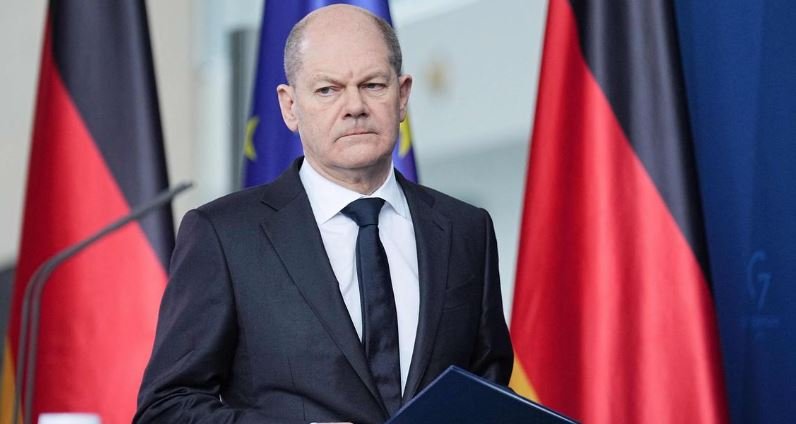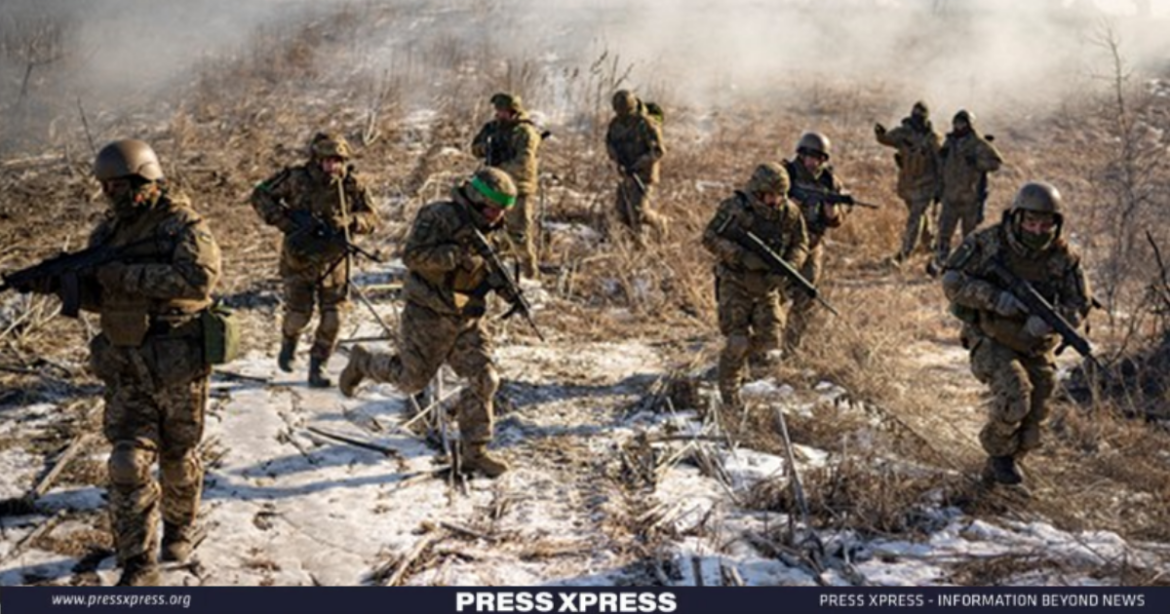NATO leaders categorically rejected a proposal from French President Emmanuel Macron, dismissing any notion of Western troops engaging alongside Ukrainian forces, marking a pivotal moment two years into Russia-Ukraine’s relentless war. The swift deflation of Macron’s suggestion underscored growing concerns that Russian aggression in Ukraine could embolden Moscow to extend its threat to Eastern European nations. Concurrently, the protracted delay of desperately needed U.S. aid to Kyiv, stalled in the intricate corridors of Congress, added to the urgency and complexity of the situation.
Macron’s Ambiguity Contrasts with NATO’s Stand
From the opulent setting of the presidential palace, Macron asserted, “There’s no consensus today to send troops on the ground.” However, in a moment brimming with strategic tension, he added, “But in terms of dynamics, nothing can be ruled out. We will do whatever it takes to ensure that Russia cannot win this war.” The ambiguity surrounding potential European military involvement was emphasized by Macron, who refrained from disclosing the countries contemplating such action, citing the imperative of “strategic ambiguity.”
“We will do whatever it takes to ensure that Russia cannot win this war.”
– French President Emmanuel Macronl

In stark contrast, NATO Secretary-General Jens Stoltenberg dismantled the ambiguity, articulating unequivocally to the Associated Press on Tuesday, February 27, 2024, “There are no plans for NATO combat troops on the ground in Ukraine.” This sentiment echoed through the halls of leadership, with German Chancellor Olaf Scholz emphatically declaring, “There will be no ground troops, no soldiers on Ukrainian soil sent by European or NATO states.”
You can also read: Will a Trump Win Tip the Balance in Dealing with China and Russia?
The resounding clarity from NATO leaders found echoes in the statements of individual member nations. Prime Minister Donald Tusk of Poland asserted that his country’s troops would not be dispatched to fight in Ukraine, and Czech Republic Prime Minister Petr Fiala concurred, stating his country “certainly doesn’t want to send its soldiers.” The collective stance reflected a palpable commitment to diplomatic solutions over militarization.
“There will be no ground troops, no soldiers on Ukrainian soil sent by European or NATO states.”
– German Chancellor Olaf Scholz

Adding Layers to Ukraine’s Dire Situation Amidst Stalled U.S. Aid and Russian Advances
Despite President Joe Biden’s steadfast rejection of any U.S. forces engaging in combat in Ukraine, National Security Council spokesman John Kirby acknowledged the sovereign decisions of NATO allies, stating, “It’s a sovereign decision that every NATO ally would have to make for themselves.” The complex tapestry of alliances and national interests came to the forefront, with a resolute assurance that U.S. troops would not be on the ground in a combat role.
Seizing on Macron’s words, the Kremlin warned of an ominous escalation, proclaiming the inevitability of direct combat between Russian forces and those of the Western military alliance. Kremlin spokesman Dmitry Peskov stated, “In this case, we need to talk not about probability, but about the inevitability,” emphasizing the gravity of the situation and setting the stage for a potentially historic clash between Russian and NATO troops.
Amid the distressing reports emanating from Ukraine, where beleaguered troops grapple with a shortage of ammunition and diminishing U.S. support, President Macron’s comments added a layer of complexity to the dire situation. The Russian forces’ recent capture of Avdiivka after nine months of stalemate underscores the challenging landscape, with Moscow still holding almost 20% of Ukrainian territory. The gloom is compounded by a stalled $60 billion U.S. aid package, entangled in the partisan politics of congressional Republicans, while polls indicate a waning GOP enthusiasm for Ukrainian support, driven in part by former President Trump’s shifting stance.
As Long as It Takes” to Nuanced Realities in U.S. Aid to Kyiv
President Biden’s commitment, voiced at the 2023 State of the Union address, to stand by Kyiv “as long as it takes” has faced pragmatic challenges. By December, the narrative had evolved to a more nuanced stance, with Biden assuring Ukrainian President Zelenskyy that military aid would persist “as long as we can.” As American resolve weakens, the European Union and its member states scramble to fortify Kyiv, offering $54 billion in economic aid this month alone, bringing the total to $150 billion since Russia’s 2022 invasion.
While the U.S. has contributed $74.3 billion in various forms of aid, Slovakian Prime Minister Robert Fico, an opponent of military assistance to Ukraine, revealed that some nations were contemplating bilateral deals to deploy troops. Fico outlined the spectrum of responses, with some countries ready to send soldiers, others staunchly opposed – including Slovakia – and some open to considering the proposal. In this climate, Macron’s suggestion, initially met with astonishment by Western leaders, found an unexpected ally in Kyiv.
Evolution of U.S. Aid to Kyiv: Pledges vs. Realities
- Biden’s commitment “as long as it takes” evolves to nuanced stance.
- EU’s $54 billion economic aid this month, totaling $150 billion.
- U.S. contribution of $74.3 billion in various forms of aid.
Ukrainian presidential aide Mykhailo Podolyak welcomed Macron’s statement, praising his deep understanding of the risks posed to Europe by the conflict. Podolyak remarked that the French president’s bold stance elevated the discourse, characterizing it as a positive sign for Kyiv.
Max Bergmann, director of the Europe, Russia, and Eurasia program at the Center for Strategic and International Studies, interpreted Macron’s move as a signal to the Kremlin that Europe would explore all options in Ukraine’s defense. While the likelihood of French troops engaging Russian forces appeared minuscule, Bergmann suggested that their role, if ever deployed, might be as technical advisors for advanced missile systems pledged to Ukraine.
Despite diplomatic assurances, Bergmann expressed skepticism about the U.S. eagerness to witness NATO boots on the ground, fearing it could exert additional pressure on the U.S. to follow suit. The unfolding dynamics reflect the intricate dance between diplomacy, military strategy, and the ever-shifting geopolitical landscape.


